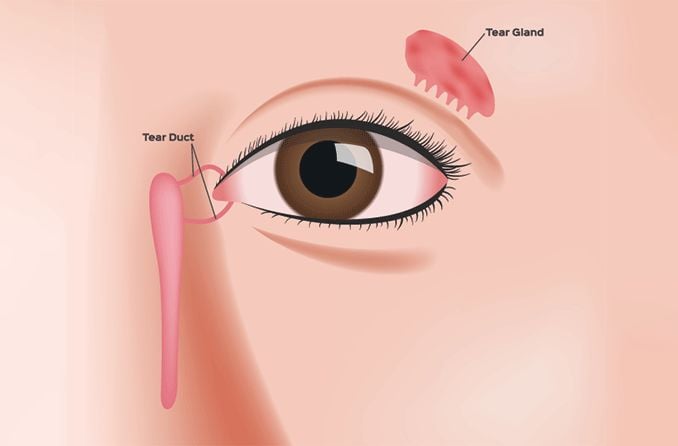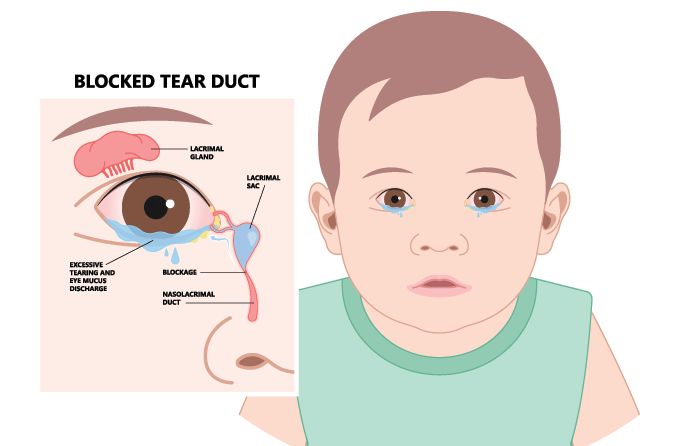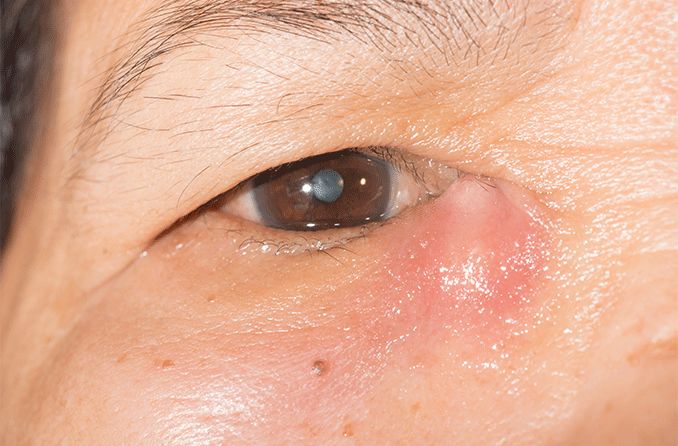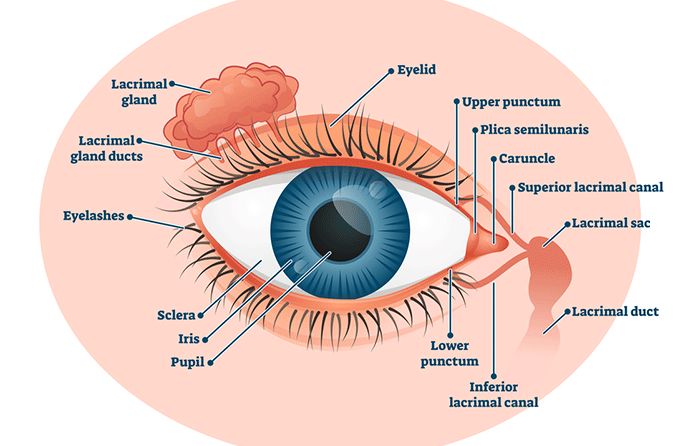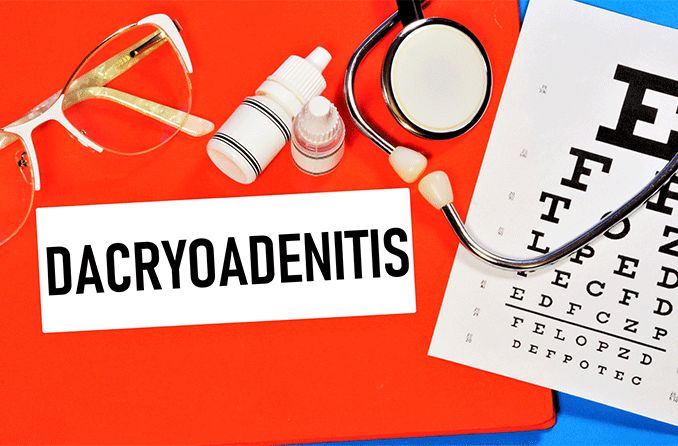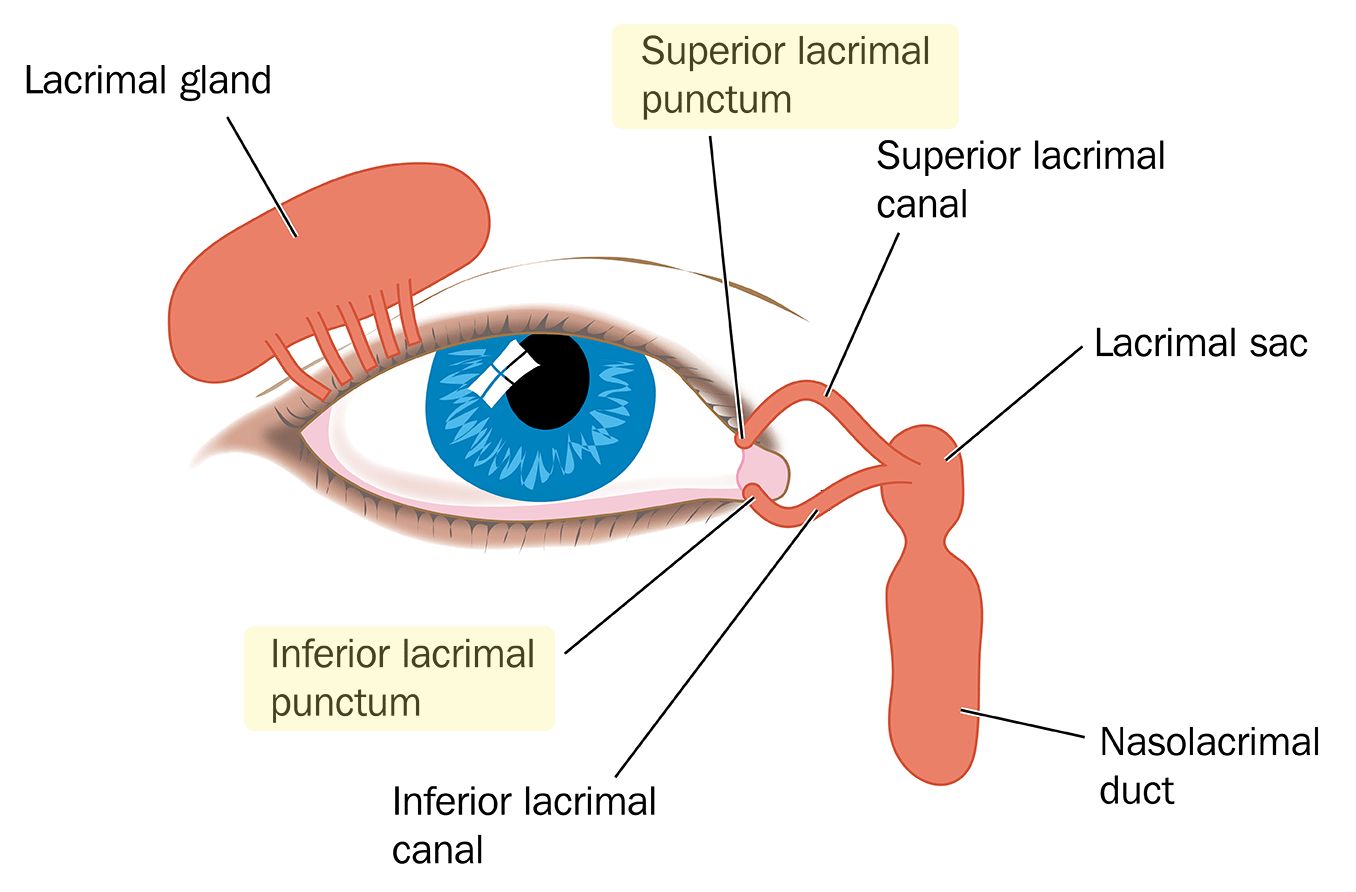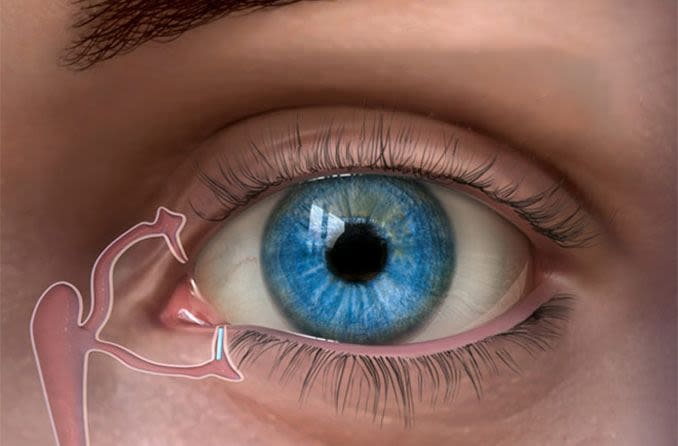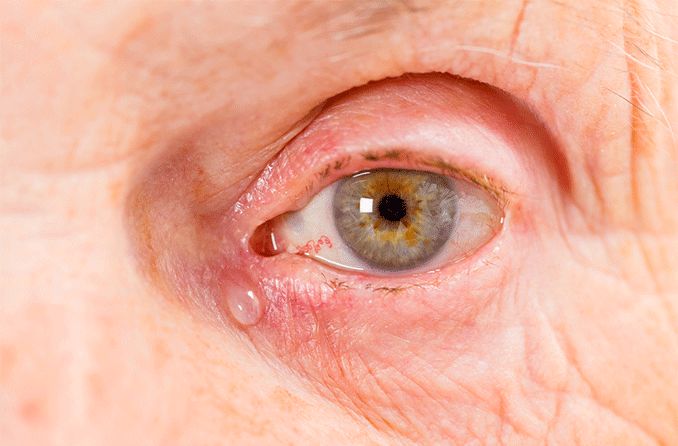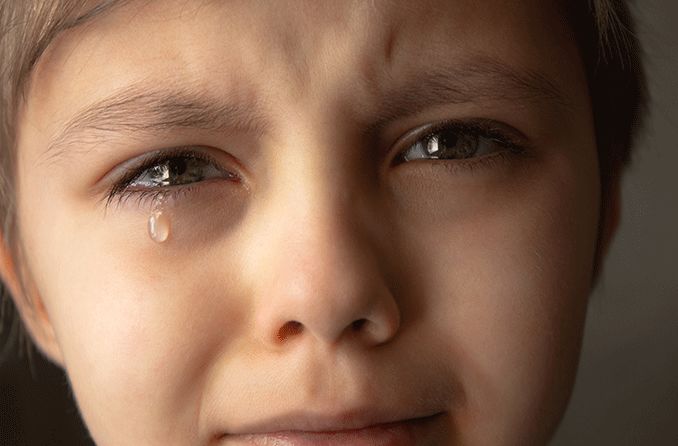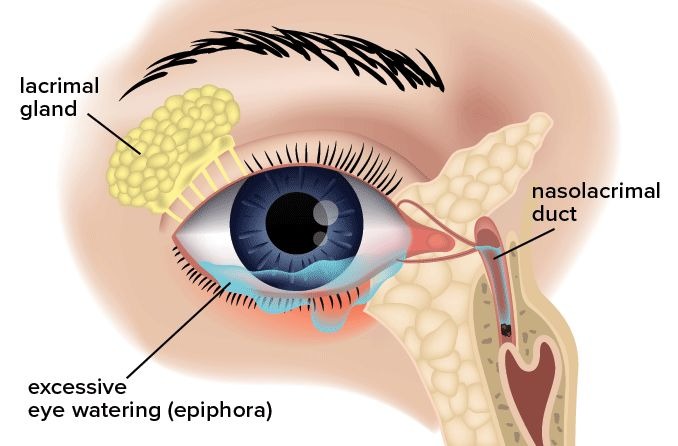What is a blocked tear duct?
A blocked tear duct (dacryostenosis) is a condition in which the eye’s tear drainage system is obstructed, meaning tears can’t properly drain out of the eye.
Tears normally drain by flowing from the eye through the puncta — two tiny openings in the inside corners of the upper and lower eyelids — through two short channels (canaliculi) into a small sac (lacrimal sac), then into the tear duct (nasolacrimal duct) and down the back of the nose.
If your tear duct becomes clogged, this process is disrupted, and the affected eye may get red, excessively watery, irritated and inflamed.
No matter the cause or severity, an eye doctor can easily diagnose and treat this condition. They may also offer some suggestions for home remedies to help alleviate discomfort.
What causes a clogged tear duct?
There are many reasons a baby or adult may experience a blockage in the tear drainage system, including injury, infection or even simple allergies. In babies, the condition can even be present from birth.
The most common causes for dacryostenosis are:
Fetal development — Congenital blocked tear ducts (that is, tear ducts that are clogged from birth) are not particularly unusual, as it affects an estimated 20% of newborns. This blockage usually goes away on its own within the first six months of life.
Aging and hormonal changes — As adults age, the puncta — openings in the eyelids that help to drain tears — may narrow, which can lead to problems with tear drainage.
Certain medications — Some eye drops used to treat glaucoma can cause tear duct blockage when used over time.
Chronic sinus infections — Adults who suffer from recurring infections in the nose may develop scarring that can partially or fully block the tear ducts.
Eye infections — In some cases, a viral or bacterial eye infection that causes pink eye (conjunctivitis) can result in inflammation and a blockage in the tear drainage system.
Injury to the nose — A broken nose or other injury can lead to scar tissue that interferes with the flow of tears.
Growths in the nose — Allergies may cause polyps that lead to tear duct blockage. Polyps or tumors can press against the tear duct and narrow the channel through which tears flow.
Blocked tear duct symptoms
No matter the cause of the problem, dacryostenosis symptoms tend to be similar from patient to patient. Common symptoms of a clogged tear duct include:
Excessively watery eyes.
Eye irritation and inflammation.
Swelling around the eye near the nose.
Redness of the whites (sclera) of your eyes.
Thick eye discharge.
Recurring eye infections.
Blurry vision or other vision changes.
These symptoms of a clogged tear duct are non-specific and can resemble symptoms of conjunctivitis or other eye conditions. Your eye doctor can perform tests in the office to determine whether you have a blocked tear duct.
One common test for a blocked tear duct is an eye drainage test that involves inserting a special dye into the eye to see how quickly it flows out. Another test requires using an instrument to probe the tear ducts to locate a blockage. Some patients may need a CT scan or MRI of the eye with dye to locate a blockage in the tear drainage system.
SEE RELATED: Epiphora: Excessive Eye Watering
Blocked tear ducts in adults
Many people associate blocked tear ducts with babies, but it’s not uncommon to see a clogged tear duct in an adult. Blocked tear ducts in adults can happen for a variety of reasons, ranging from age-related eye changes to scarring to growths in the nose.
Aging can certainly be a factor, because the tiny holes in the eyelids that help to drain tears may become narrower with age — this increases the chances of a blocked tear duct. Women over age 40 are especially prone to clogged tear ducts.
Adults with chronic allergies, glaucoma or recurring eye or sinus infections are among those most likely to develop a blocked tear duct. Patients with a history of a nose injury, or surgery on the nose or eyes, may also be at greater risk because scarring in the eyes or nose can result in a clogged tear drainage system.
Because the causes of blocked tear ducts in adults vary, it’s especially important to make an appointment with an eye doctor.
Your doctor will examine your eyes and ask questions about your symptoms and medical history to find the cause of the problem and determine the right treatment for you.
READ MORE: Punctum of the eye
Clogged tear duct in babies
About 20% of newborns are estimated to have dacryostenosis at birth. The most common cause is a membrane that seals the tear ducts during development in the uterus — in some infants, this membrane stays in place and continues to block the flow of tears out of the eye.
In other cases, the baby’s tear drainage system hasn’t fully developed. As the baby grows and the eye anatomy matures, the problem often gets better.
While a clogged tear duct in a newborn can be worrisome to parents, it is seldom serious. Nevertheless, you should still talk with your doctor about your baby’s blocked tear duct — they may recommend home remedies, such as tear duct massage, to treat or alleviate the problem. Your doctor can teach you how to do this at home.
SEE RELATED: Identifying and treating pink eye in babies
Blocked tear duct treatment
Treatments for clogged tear ducts vary, depending on the underlying cause of the condition. Your eye doctor will work to determine the reason for your dacryostenosis and offer the right treatment for you.
Here are some typical blocked tear duct treatments:
Blocked tear duct medication — If you have an eye infection, your doctor can prescribe an antibiotic to fight the infection and reduce any inflammation that may be causing the blockage.
Blocked tear duct massage — In some cases, your doctor might recommend that you do gentle massage at home and wait to see if the problem resolves on its own. This approach is especially common for a blocked tear duct in newborns.
Procedure to unblock tear duct — There are various procedures your doctor can do in the office or hospital to unblock your tear duct. One involves using a probe to dilate the puncta and then flushing out these enlarged openings. Another procedure requires using a catheter with a small balloon that can be inflated to unblock the duct. A third procedure involves inserting a tube that stays in the eye for several months to help with tear drainage. These procedures may require general anesthesia, especially for a clogged tear duct in an infant.
Blocked tear duct surgery — In some cases, your eye doctor may need to perform blocked tear duct surgery (dacryocystorhinostomy) to insert a stent into your tear drainage system. The doctor may use local or general anesthesia.
Home remedy for blocked tear duct
Wondering how to unblock tear ducts naturally? You should always see your eye doctor for diagnosis and treatment of a blocked tear duct. But, if you’ve already done so, there’s one home remedy for a blocked tear duct that may relieve eye irritation: warm compresses.
You can apply a clean, warm, wet washcloth gently to the eye to ease symptoms of a blocked tear duct in an infant, child or adult. A blocked tear duct massage may also help.
Blocked tear duct massage
Some pediatricians and eye doctors recommend that parents use blocked tear duct massage to help relieve a clogged tear duct in an infant.
This method can help loosen the membrane that seals the tear ducts during fetal development, which is sometimes still present at birth and causes an obstruction in the tear drainage system.
To do blocked tear duct massage for a baby, you’ll need to:
Wash your hands very well.
Put any prescribed eye drops in the eye.
Use your index finger to make gentle strokes down the side of the nose.
It’s best to have your doctor show you how to do a blocked tear duct massage properly, so you can get the most effective results.
See an eye doctor for a clogged tear duct
If you think you (or your baby) might have a blocked tear duct, make an appointment with your eye doctor right away since the condition is usually easily treatable.
An untreated blocked tear duct, meanwhile, can lead to the growth of bacteria, fungi and viruses that can cause an eye infection.
Once your blocked tear duct has been treated, you can prevent clogged tear ducts in the future by washing your hands regularly, trying not to touch or rub your eyes, practicing good contact lens hygiene and replacing eye makeup regularly.
SEE RELATED: Dacryocystitis (tear duct infection)

